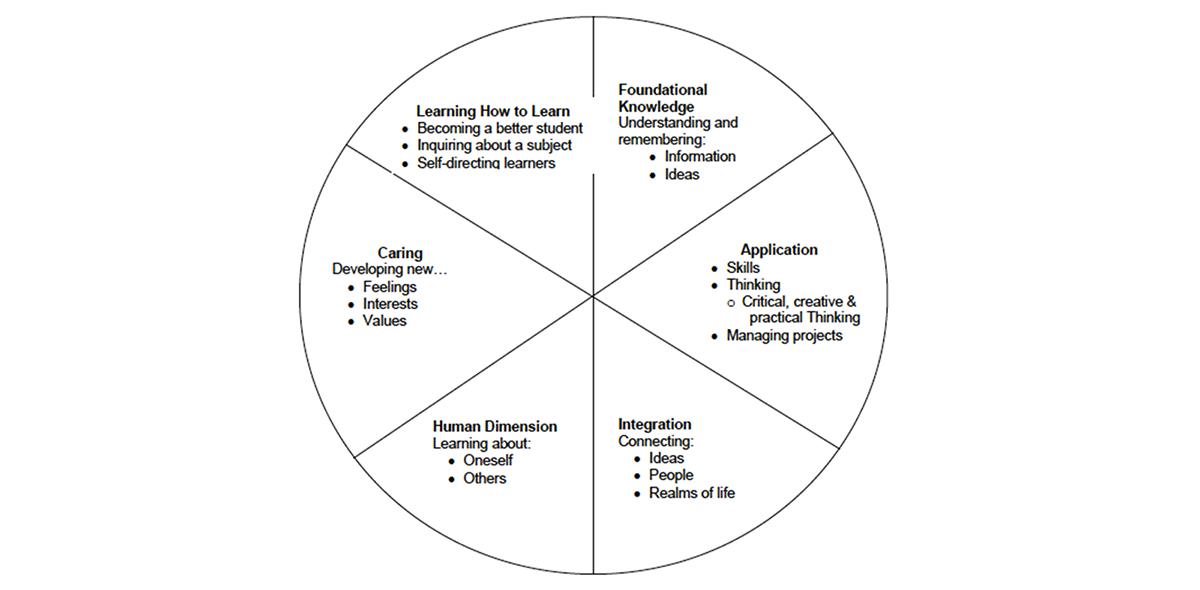“Learning is not a spectator sport. Students...must make what they learn part of themselves.” — Chickering and Gamson, 1987
“The more students believe they operate under their own control, the greater is their learning motivation.” — Hativa, Teaching for Effective Learning in Higher Education
Learning-centered teaching is simply the effort to put the focus of higher education classrooms on learning, rather than teaching. That is, the emphasis is less on the professor delivering content and shifts to students themselves engaging in significant learning, including not only foundational knowledge, but also metacognitive skills, application of ideas, integration of courses and experiences, and the development of their values. This does not mean faculty abandon content — but instead of covering content, the emphasis is on the student using content.
Central to learning-centered teaching is the idea of backward design. In backward design, you begin course planning not with by thinking of what you were taught in Introduction to Biology or Political Theory, but by thinking carefully about what knowledge and skills you want students to take away at the end of the semester. From there, you reverse engineer the course.
The First Step: Determine what you want students to learn and do in your class.
Dee Fink’s dimensions of significant learning are especially helpful with this (as is Bloom’s Taxonomy).
Fink's Dimensions of Significant Learning

- Foundational Knowledge: Understanding and remembering information and ideas.
- Students will develop a theoretical vocabulary for discussing inequality.
- Application: Skills; critical, creative, and practical thinking; managing projects.
- Students will demonstrate teamwork in preparing a piece of music for performance.
- Integration: Connecting ideas, people, realms of life.
- Assess the contributions of role of gender in the scientific discovery and the history of science.
- Human Dimension: Learning about oneself, others.
- Students will identify areas where they have strengths and areas that need improvement.
- Caring: Developing new feelings, interests, values.
- Understand the impact of disease on individuals and populations.
- Learning How to Learn: Becoming a better student; inquiring about a subject; self-directing learners.
- Students will become familiar with our libraries and be able to do research to assess the impact of the Civil Rights Movement on contemporary politics.
Drawing from this, design your own learning goals.
- What should students hear, read, view, explore or otherwise encounter?
- What knowledge and skills should students master?
- What facts, concepts and principles should they know?
- What processes, strategies and methods should they learn to use?
- What are big ideas and important understandings students should retain?
— Wiggins and McTighe, Understanding By Design
Good course goals are SMART
S pecific
M easurable
A ttainable
R ealistic
T imely
As you develop your goals, this list of verbs can be helpful. For more information, please see our Course Level Learning Goals page.
The Second Step: Determine acceptable evidence.
- How will you – and the student – know that a student is progressing toward those learning goals?
- Is the evidence aligned with the goal?
- Are there assignments unrelated to a stated goal? Why?
See our Course Level Assessment Planning page for more information. Using Mid-semester Evaluation and Rubrics are especially helpful for figuring out how the class is going for students.
The last step: Plan learning experiences
- What are the best ways for students to develop their ability to meet the learning goals?
- How can they practice using their new knowledge?
- How can they apply their learning?
See our other Teaching Strategies pages for more information. Active Learning, in particular, is geared toward Learning-Centered Teaching. Our Getting Started with Active Learning page might be especially helpful if you are new to this approach.
More Resources
- Syllabus Reflection Worksheet for Students/Prof. Becky Packard
- Inclusive Syllabus Rubric/University of Virginia
- Inclusive Syllabus Design/Tulane University
- Learner-Centered Teaching/Mary Ellen Weimer
- Five Characteristics of Learner Centered Teaching/Faculty Focus
- Long term benefits of learning centered instruction/Faculty Focus
- NC State Resources on Learner Centered Teaching


Explore the MHC Social Universe >